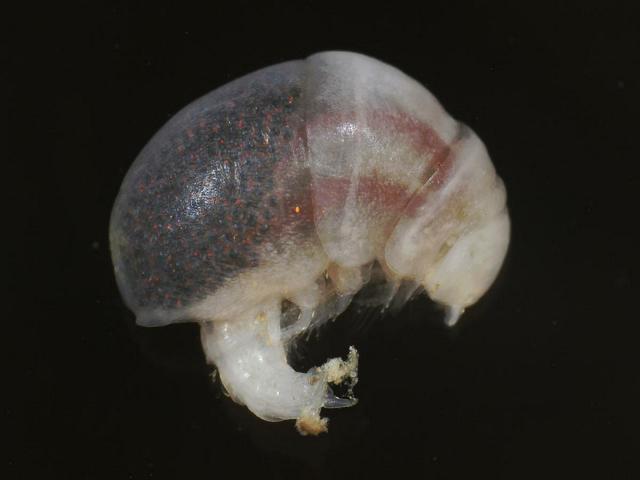
APHOTOMARINE
An educational resource dedicated mainly to the photography
and diversity of marine life that can be found in coastal waters
and intertidal areas of Great Britain and Ireland by David Fenwick.

Pachypygus gibber (Thorell, 1859) - A notodelphyid copepod (Copepod images)
Scroll down and rollover titles to change screen image or click on title to view image.
Copepod
Pachypygus gibber
- female with pre-eclosional
embryos with red eyes 1
Pachypygus gibber
- female with pre-eclosional
embryos with red eyes 1
Copepod
Pachypygus gibber
- female with pre-eclosional
embryos with red eyes 2
Copepod
Pachypygus gibber
- lateral view female 1
Copepod
Pachypygus gibber
- lateral view female 2
Copepod
Pachypygus gibber
- lateral view female 3
Copepod
Pachypygus gibber
- lateral view female 4
Copepod
Pachypygus gibber
- lateral view juvenile? 1
Copepod
Pachypygus gibber
- collection / group 1
Copepod
Pachypygus gibber
- with 0.1mm division rule 1
Copepod
Pachypygus gibber
- lower lateral close-up 1
Copepod
Pachypygus gibber
- lower lateral close-up 2
Copepod
Pachypygus gibber
- washing Ciona in bucket 1
Copepod
Pachypygus gibber
- Ciona in sample containers 1
Specimen found in sample of sea squirts, tunicates, taken from pontoons at Mylor Marina, Mylor Churchtown, near Falmouth, Cornwall. 18.09.15.
Copepod
Pachypygus gibber
- lateral view 1
Copepod
Pachypygus gibber
- lateral image of dorsal parts 1
Copepod
Pachypygus gibber
- in Ciona intestinalis 1
Copepod
Pachypygus gibber
- in Ciona intestinalis 2
Copepod
Pachypygus gibber
- in Ciona intestinalis 3
Specimen above found whilst dissecting an odd looking Ciona intestinalis, Yellow vase sea squirt, which was whitish and distorted. The Ciona was collected from a pontoon at Newlyn Marina, Newlyn, Cornwall. 29.06.16.
At Mylor Marina the species was likely from Ciona intestinalis, the Yellow vase sea squirt; but Ciona intestinalis and Ascidella aspersa were collected together. Specimens were found in the sediment in the bottom of the collection container after straining through a 1mm square hole plastic sieve (a 99p one from a supermarket). The strained material was washed and placed in fresh seawater and looked at under a stereomicroscope. It is likely the seawater in the collection containers had become anoxic and the copepods had come out or fallen out of the tunicates. Specimens were live when photographed.

The main objective of this website is in furthering environmental awareness and education through the medium of photography. To increase awareness and access to the wildlife of the region and help
people find and identify it. Sometimes the difference between species is obvious but many species can only be determined by observing microscopic characteristics that are specific to any one species.